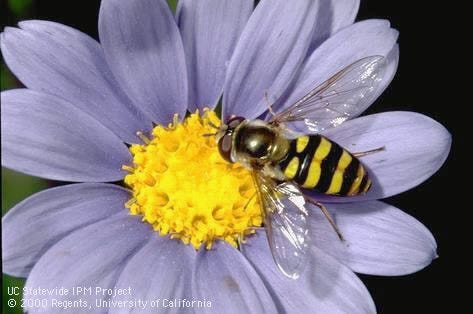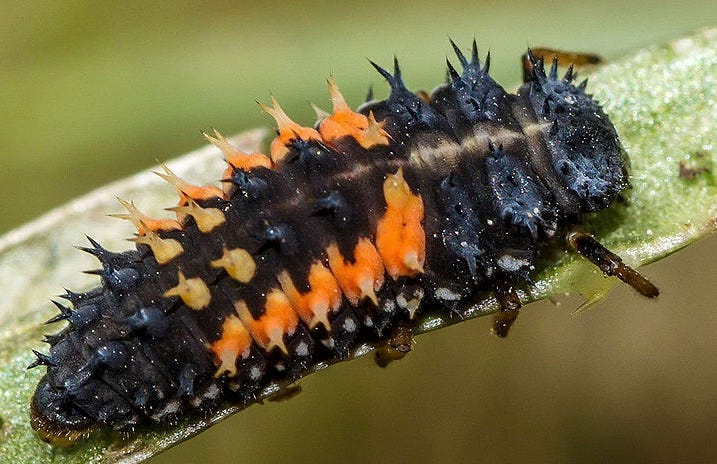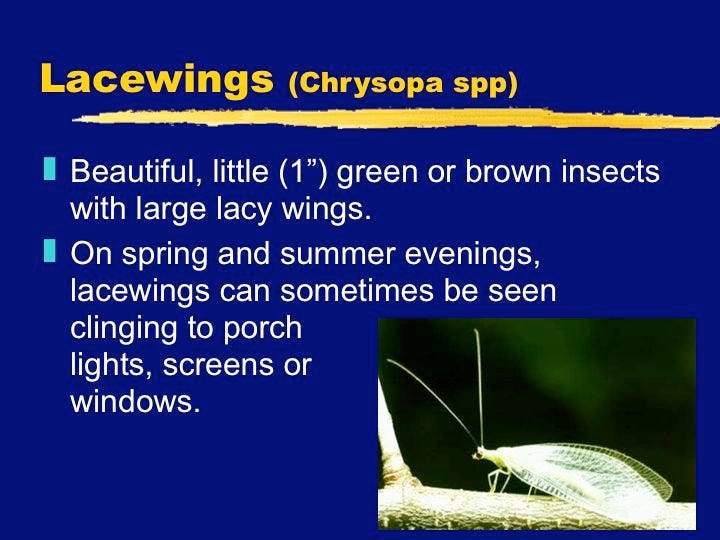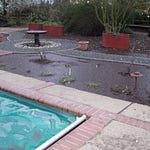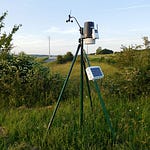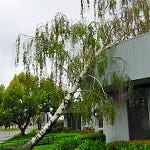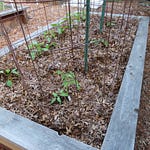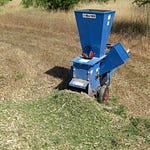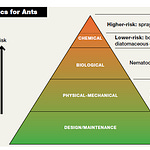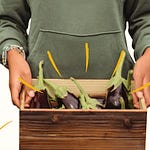In today’s newsletter podcast, Debbie Flower, America’s Favorite Retired College Horticultural Professor, extols the benefits of spending time in the garden, and closely observing your plants. And, I talk about how those who took up gardening during the Covid epidemic found out that gardening is good for the gardener, too, in a myriad of ways.
Do some gardeners have a natural green thumb? Although there can be a lot said for patience and perseverance when it comes to landscaping tasks, perhaps there are some habits that seasoned gardeners have in common. Such a list was published by the Santa Clara and San Joaquin County Master Gardeners here in California a few years ago entitled, “The Top 10 Habits of Happy and Successful Gardeners.”
It is a list that is worth reviewing from time to time, to see which habits you’ve made a normal part of the garden day, along with those habits that might need a bit of refreshing.
For those of you that like the quick list, the Top 10 included: “Feed the Soil”, “Learn Before Lopping”, “Embrace Failure”, “Shop Carefully”, “Put the Right Plant in the Right Place”, “Water Intentionally with Both Hands”, “Control Snails and Slugs”, “Never Let a Weed Go to Seed,” “Attract Beneficial Insects”, and “Linger in the Garden”.
Successful Habits of Happy Gardeners, by Louise Christy, Santa Clara Co MG (Summer 2018, San Joaquin MG Garden Notes) (Habits 1-5)
Habit Number 1: FEED THE SOIL
Happy and successful gardeners know that taking care of the soil (and learning to love our clay soil) is the first priority.
Soil has three main parts. The first is the mineral component, which soil scientists divide into sand, silt, and clay based on particle size. The important thing to know about sand, slit, and clay is that the clay particles are the smallest, and they are really small. The super-small size of the particles makes clay soils highly nutritious for plants.
The second component of soil is the organic matter. Good, healthy soil is teeming with life, from big earthworms and pill bugs, to billions of living micro-organisms, fungi, and bacteria. Healthy soil also contains a lot of organic mat- ter, for example decomposing leaves or grass clippings. It is the job of the living organisms in the soil to breakdown the organic matter and return its nutrients, especially nitrogen, to the soil.
The third component of soil is the space in-between the mineral and organic particles. This pore space is filled with water and air which are both essential to healthy soil. Plant roots need oxygen in addition to water and all those worms and beetles and protozoa and bacteria that are busy breaking down organic matter need water and air to stay alive.
"Feeding the soil" means replacing the water and organic matter and preserving the air by not overwatering or compacting the soil. Happy and successful gardeners follow this maxim for improving soil: compost, compost, compost, mulch, mulch, mulch.
Compost improves the structure of the soil and makes it crumbly and easier to work. Spread compost all over the soil a couple times per year. If the soil has not been gardened recently, you may want to dig the compost into the soil several inches down. The other key to feeding your soil and increasing the organic matter is to use organic mulch. The most popular mulches seem to be wood chips or bark, but you can also use grass clippings, leaves, straw, or once again, compost.When working with clay soil, avoid overwatering, and let it dry until it is moist and crumbly before you dig. Do not add sand to clay soil. Sand plus clay equals concrete.
Great garden soil with lots of clay, organic matter, and microorganisms will be dark brown and crumbly and will smell earthy. It can be dug easily with a trowel, and it will have worms. Be patient and persistent. Building great soil can take years, but with careful treatment and feeding, “impossible clay” can become lovely garden soil.Habit Number 2: LEARN BEFORE LOPPING
Happy and successful gardeners know pruning is a good thing and fun to do, but it can be complicated, so they make a point to learn before lopping.
Many gardeners have pruners with them constantly for clipping and trimming their plants. There are many good reasons to prune and clip plants including training young plants, grooming for appearance, to control the shape and size of a plant, to influence flowering and fruiting, to invigorate stagnant growth, and to remove damaged or infested growth. However, improper pruning can ruin or destroy plants.
Not all plants respond to pruning in the same way. Happy and successful gardeners are careful to research and learn how their plants will respond to pruning before they prune. This is especially important when talking about a large and valuable tree. Badly pruned large trees may drop branches or die, resulting in hazardous situations and expensive removal costs.Habit Number 3: Embrace Failure
Gardening is a learned skill. Compare it to medicine. Just like no one is born knowing how to perform a liver transplant, no one is born knowing how to garden. Like any other skill, there is a world of knowledge and technique that when learned, over time, will lead to success.
Happy and successful gardeners like to experiment in the garden and have learned to embrace failure. A dead or sick plant is a learning opportunity. They're always curious, always wondering what's going on in the garden, and eager to learn. For the most part, happy and successful gardeners aren't very sentimental about their plants. If a plant is sickly, a good gardener knows it's time to move it or remove it---which means, it's time to go shopping!Habit Number 4: Shop Carefully
There is nothing more delightful than a few hours at a great nursery. It's like having all the benefits of a garden without the work. Experienced gardeners look for specific things when buying plants.
1) Look for plants that are healthy and vigorous. The plant should have sturdy stems or branches, show evidence of new growth with no sign of insect infestations, disease, or injuries.
2) Look for plants with good shape and structure.
3) When choosing annuals and vegetable transplants in small pots, look for young, small plants, not ones that seem to be mature or already have flowers.
4) Buy transplants when there is only one plant per pot. Experienced gardeners have learned to recognize crowded transplants and avoid buying them.
5) Look for a healthy, well-developed root system. Roots should usually be white or light colored, not brown, slimy or mushy. If there is a small mat of roots at the bottom, but otherwise the plant looks vigorous, it's probably OK.Habit Number 5: Put the Right Plant in the Right Place
If you ask experienced gardeners for their favorite gardening tip, it is usually "Right plant, right place."
Plants that are well suited to the location where they are planted will be faster to put out new roots and new growth. They will be healthier and better able to withstand insect pests and diseases than if they were planted in the wrong place. They will perform well, grow well, look better, and require less attention from you.
We have what's called a Mediterranean climate which means dry summers, rainy winters, some frost, and minimal freezing. The majority of San Joaquin Valley is in Sunset Zone 14 and USDA Hardiness Zone 9.Evaluate the planting spot by thinking about the following questions:
Does the area get full sun, part sun, or shade? Is the area more wet or dry? Where is the water source? Does the spot get high traffic or is it out of the way? Is the area near a wall or fence that reflects heat? What is the amount of horizontal and vertical space available? Is the space on a hillside? Check the Sunset Western Garden Book, the nursery label, or books and sources online to determine the right plant for your place.
Part 2 Top Ten Habits of Happy and Successful Gardeners by Sue Davis, Master Gardener (Habits 6-10, Fall 2018 SJ MG Garden Notes)
Habit Number 6: Water Intentionally and With Both Hands
Hand water your garden occasionally. It allows you to see the level of moisture in the soil firsthand, so you can adjust watering accordingly.
Water with both hands. Carry a trowel or cultivator in one hand, and the hose in the other. Water the area, and let the water sink in. Then, with the trowel or cultivator, dig down into the soil in several places. Be sure to check down that they work properly.
Dig down several inches. Has the water penetrated all the soil? Often, especially when watering soil that has been dry for a while, we grossly underestimate the amount of water needed to really soak the soil. Your goal with intentional watering is to get the water to penetrate the root zone of the plant.
Watering intentionally means you should pay attention to your sprinkler and drip systems. Reset the timers as appropriate for the season. Maintain them, make sure broken or clogged parts are fixed.
With containers, often the water simply slides right down between the root-ball and the side of the pot. If the soil is very dry, the root-ball shrinks and repels water. The best solution for watering very dry containers is to put the whole pot into a bucket, fill it with water to the top of the root-ball, and leave it overnight.
Habit Number 7: Control snails and slugs
When you see your plants ravaged with huge raggedy holes in the leaves or silvery traces crisscrossing the driveway in the morning, you have snails.
Many happy and successful gardeners go out in the night to hunt snails. A successful snail hunter says, " If you have insomnia, you can either think about the snails eating your garden, or you can get up and put a stop to it."
· Hunt at night with a flashlight or a headlamp.
· Have a bucket half full of water with a squirt of dish detergent.
· Search your entire yard. Do this often. You will soon discover the snail “hot spots.”
· Pick them up and drop in the bucket.
· Night hunting is best after a spring rain when the snails are most active.
· When you are done with the hunt, leave the bucket outside overnight. In the morning dump it in the compost or in the garden.The soap is not harmful.
If you are diligent, after several hunts you will have reduced the population considerably. After a few years, you will have very little snail problem at all, and your hunts will be short and much less disgusting.
Slugs present a slightly different problem. Slugs don't have convenient handles, so picking them up is hard. Beer traps work well for slugs, but be sure to clean them out and fill with new beer after a few days.
What about snail bait? SLUGGO is made of an iron phosphate active ingredient with bait additives. Go ahead and use it if you prefer--it is safe and effective, and non-toxic to wildlife and pets. Avoid using metaldehyde baits (Correy’s, Deadline) which are highly toxic to animals.
Habit Number 8: Never Let a Weed Go To Seed
Weeds are survivors. Weeds often have high rates of seed production, hard seed coats, or underground rhizomes or bulbs that allow them to remain viable for years.
There are many types of weeds. Like your garden plants, they can be classified into annuals and perennials, even shrubs and trees. Annual weeds pop up in your garden over and over. When these weeds are little they look just like baby garden seedlings. They compete with garden plants for light, water and nutrition, and they will win the fight if you don't join the battle.
In most soil there is a collection of weed seeds that have accumulated over decades. weed ecologists call this a ‘seed bank.’ Weed seeds can lie dormant in the soil for years until conditions favor germination. For example, seeds of chickweed and mustards can remain viable for 10 years, purslane up to 40 years and curled dock over 80 years!
Keep the weed seed bank in mind as you garden. Whenever you see a weed about to go to seed, remember that one weed's deposit to the seed bank is thousands of seeds that may last in the soil for many years. That thought alone should be enough to get you to pull that weed out of the ground.
Chemicals for weed control should be the last resort. Never use them in a vegetable garden. If you do choose to go that route, follow all label directions.
Habit Number 9: Attract Beneficial Insects
Among the insects in your garden there are basically two kinds of eaters: vegetarians and carnivores. When we see a bug eating our roses, our first instinct is to kill it, often with some kind of noxious chemical spray.
Nature offers a better route. What we need to do is to invite the carnivorous insects back into the garden. These voracious little creatures will eat the aphids and parasitize the hornworms, mangle the mites, and crunch the caterpillar eggs, killing them so they do less damage to our plants. In gardeners' parlance, you want a balance between the "good bugs" (beneficials), and the "bad bugs" (pests). When balance is achieved, there will be much less damage to plants.
Beneficial insects can be encouraged by providing sources of nectar and pollen--in other words, flowers. Most beneficial insects are very small, they appreciate tiny flowers in their scale.
Many of the "bad bugs" are actually the larval stage of "good bugs." The syrphid fly larvae look like tiny green worms, and the larvae of lacewings and lady beetles look almost like tiny alligators. Larvae eat the most aphids!
Learn to tolerate some insect damage as a minor but necessary evil for attracting beneficials. When you spot aphids on a plant, don't immediately kill them all off. Aphids appear first, then the carnivorous insects move in to eat them.
Above all, do not use toxic pesticides. They kill the beneficials as well as the pests, completely defeating your purpose. Often use of pesticides results in rebound or secondary infestations that are worse than the original problem.
Habit Number 10: Linger in the Garden
"Linger: to stay in a place longer than necessary, typically because of a reluctance to leave."
One habit I have noted among the successful gardeners I know: have patience with a new plant. Lots of patience. “Sleep, creep, leap” is a gardener’s way of saying to give a perennial or shrub at least three years before it puts on a show. And this is especially true with California native plants. For its first year, it will just sit there. All the action is happening underground, developing a robust root system. In the second year, you’ll note more growth. To convince yourself that it is growing, put a stake next to the plant in its first year. The stake should be the exact height of the plant. By year two, the plant should be a bit taller than that stake.
Thanks for reading Beyond Basics: The Garden Basics with Farmer Fred Newsletter! Subscribe for free to receive new posts and support my work.
Thank you for also listening to the Garden Basics with Farmer Fred podcast! It’s available wherever you get your podcasts. Please share it with your garden friends.
Fred Hoffman is also a University of California Cooperative Extension Master Gardener in Sacramento County. And he likes to ride his bike(s).





